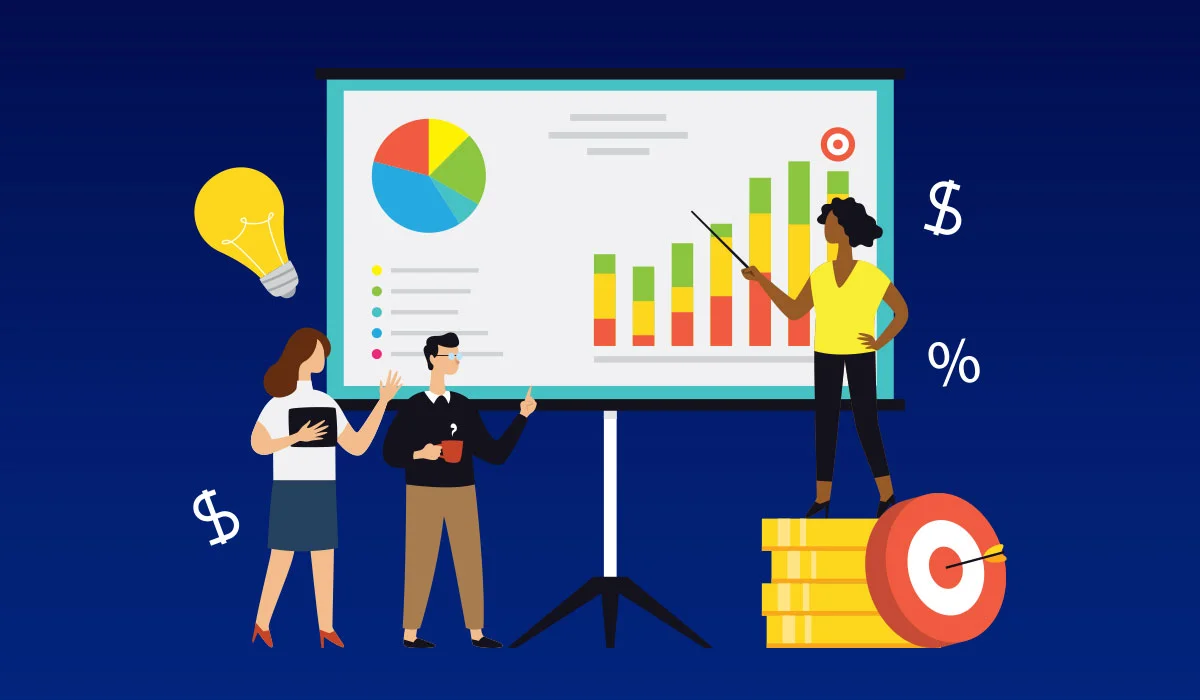Tracking Conversions in Google Ads
Vineetha. RK11 Jul 2024
Running a successful ad campaign is not just about getting clicks and impressions.
It is more about driving tangible results that really matter to your business’s success.
This is where Tracking Conversions in Google Ads becomes crucial.
It reveals all about the performance of your ad campaign.
By analyzing and monitoring aspects such as which ads, keywords, and campaigns are giving the most valuable actions on your website or app, you can easily optimize your ad spend.
This optimization can surely bring maximum profit or ROI to your business.
In this blog, let’s find out why Google Ads conversion tracking is so important, what types of conversions you can track, and how to set it up in simple steps.

What’s Ahead
Why Track Conversions in Google Ads?
Tracking conversions in Google Ads provides insights into the actions that users take after interacting with your ads, such as completing a purchase, filling out a lead form, or subscribing to a service.
Here are some compelling reasons to know why tracking conversions is essential:
Optimizing Ad Performance:
By tracking conversions, you can identify which ads, keywords, and campaigns are providing the most appreciated and desired actions on your website or app.
This data helps you to optimize your ad spend by focusing on strategies that can generate the best ROI and make a loyal customer base.
Allocating Budget More Effectively
With conversion tracking in Google Ads, you can easily allocate your advertising budget more effectively.
Instead of blindly investing in all areas, you can directly put money towards campaigns that are delivering tangible results and driving meaningful conversions.
Understanding Customer Behavior
Conversion tracking provides valuable insights into customer behavior, patterns, and preferences.
You can assess the patterns such as which products are popular, what message will resonate with your audience, and which aspect of the ad (touchpoint) can lead to conversions.
Measuring ROI
One of the primary goals of any advertising campaign is to achieve a positive return on investment (ROI).
Conversion tracking allows you to calculate the ROI of your Google Ads campaigns accurately.
You can compare the cost of acquiring a customer (CAC) to the revenue generated, helping you measure the profitability of your marketing efforts and strategies.
Refining Your Targeting and Messaging
By analyzing conversion data, you can refine your targeting criteria and optimize ad messaging to get a better response from your audience.
You can make it more relatable and tailored to specific customer segments, addressing their unique needs, pain points, and interests.
This personalization can lead to increased engagement, and enhanced customer experience, which results in higher conversion rates and customer satisfaction.
This kind of approach can help you in improving the overall performance of your ad campaigns over time.
Without Tracking Conversions in Google Ads, you will be lacking the essential data needed to make informed decisions about your advertising strategy and budget.
What Types of Conversions Can You Track With Google Ads?
Google Ads allows you to track conversions in many ways. Some of them are:
Website actions
These are actions taken by users on your website after clicking your ad.
Website actions usually include making a purchase, filling out a form, signing up for a newsletter, button clicks, or viewing a key page.
To track website conversions, you need to add a conversion tracking tag to the relevant pages on your site.
Phone calls
If getting phone calls is the key goal for your business success, you can track calls from your ads through two different ideas:
- Calls can be placed directly from call extensions or call-only ads.
- Calls can be placed to a phone number on your website after an ad click. This requires adding a phone snippet to your site.
App installs and in-app conversions
For businesses promoting mobile apps, Google Ads can track installs, in-app purchases, and other in-app events.
This requires integrating the Google Ads Software Development Kit (SDK) into your app and clearly defining the events you want to track and record as conversions.
Imported or offline conversions
Some conversions, like in-store sales or phone reservations, may happen offline after an online ad interaction.
Google Ads lets you import and analyze offline conversion events in a much easier and more streamlined manner.
These events can be linked back to the relevant ad click if there is a common identifier, such as an email address or phone number, that connects the click and conversion.
Local conversions
For businesses with physical locations, with the Tracking Conversions in Google ads, you can focus more on local customers and local conversion rates.
You can track actions like calls, direction requests, and website visits that occur after engagement with a Google Maps or Search ad.
Conversion Categories
Google Ads also allows you to group your conversion actions into categories based on the type of user action.
So, while setting up conversion tracking in Google Ads, it is important to assign each conversion to respective categories.
The main categories are Sale Categories, Leads categories, and Further categories.
Sale Categories
This category includes conversions related to direct purchases made on your website or app.
This could be products bought, services subscribed to, or any other transaction that directly generates revenue for your business.
Tracking sale conversions allows you to assess the direct impact of your ad campaigns on your bottom line.
Leads categories
Leads Category mainly includes conversions that signal potential customer interest or engagement, such as form submissions, sign-ups for newsletters, or requests for more information.
Lead conversions are valuable as they indicate users who are interested in your offerings and may convert into paying customers in the future.
Further categories
This category can differ depending on your specific business goals and objectives.
It may include conversions related to app downloads, video views, social media engagements, or any other actions that are relevant to your marketing strategy.
Under this category, you can group actions that don’t fall directly under sales or leads.
Tracking further conversions provides insights into different stages of the customer journey.
It also helps you optimize your ad campaigns for a broader objective and goal that goes beyond immediate sales or leads.
Setting Up Google Ads Conversion Tracking in 3 Steps
Tracking Conversions in Google Ads is a simple process that can be completed in just three steps:
Step #1: Create your conversion action
- Log in to your Google Ads account and go to the “Tools & Settings” menu.
- Under “Measurement,” choose “Conversions” and click on the ‘blue +’ button to make a new conversion action.
- Choose the appropriate category (website, app, phone calls, etc.), define the conversion action (purchase, sign-up, call duration, etc.), and set the value if it is applicable.
Step #2: Set up your Google tag
- Once your conversion action is made, now click on “Tag setup” to generate the Google tag.
- Choose the tag type (usually “Google Ads tag”) and follow the instructions to install the tag on your website, app, or landing page. This tag tracks user interactions and sends data to Google Ads.
Step #3: Check your Google Tag
- After installing the tag, go back to Google Ads and click on “Conversions.”
- Verify that the tag is active and correctly recording conversions by checking the “Tag setup” status and conversion data.
Conclusion
Tracking Conversions in Google Ads is a powerful way to measure and analyze the success of your advertising strategies.
It is vital for making data-driven optimizations and understanding the impact of your ad campaigns on user behavior and business outcomes.
By taking careful note of the key actions like sales, leads, and app installs, you can easily allocate your budget more effectively and get better results for your business.
With clear conversion data at your hand, you will be well-equipped to maximize the ROI of your Google Ads spend.
Feel free to read our related blogs as well!
- Ultimate Guide to Google Ads
- How to Set Up a Successful Google Ads Campaign
- Understanding Different Types of Google Ads
- Writing Compelling Ad Copy for Google Ads
- Optimizing Your Google Ads Budget
- Common Google Ads Mistakes to Avoid
- How to Create Effective Display Ads on Google Ads
- Remarketing with Google Ads: Strategies to Win Back Customers
- Smart Bidding Strategies in Google Ads: What You Need to Know
Latest Post

5 Do’s and Don’ts When It Comes To SEO
 18 Sep 2023
Readmore
18 Sep 2023
Readmore
Want to learn more about the digital marketing service we provide?
Contact Us to Get Started!




